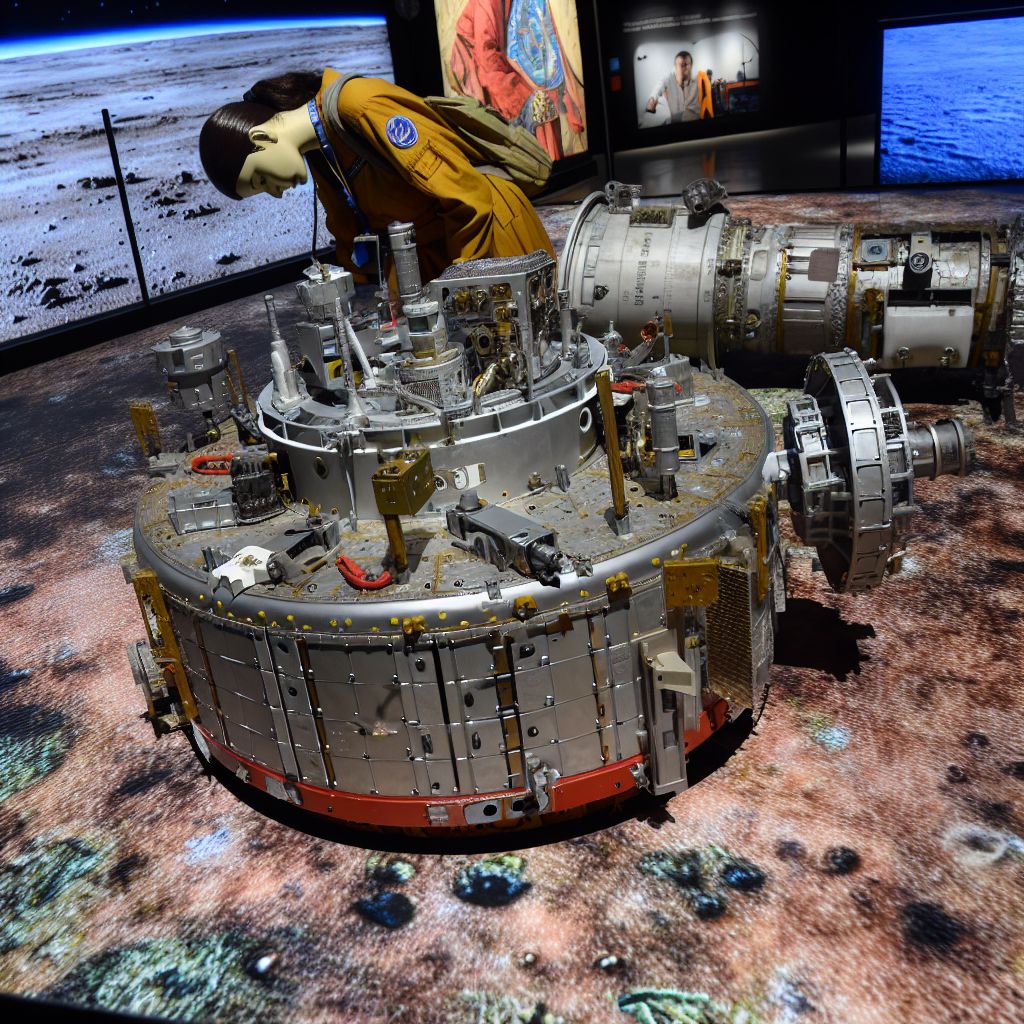Deutsch: Raumfahrtnavigation / Español: Navegación espacial / Português: Navegação espacial / Français: Navigation spatiale / Italiano: Navigazione spaziale
Spacecraft Navigation in the Space industry context refers to the techniques and Systems used to determine the position, Velocity, and orientation of spacecraft relative to Celestial bodies or other spacecraft, and to control their trajectory and attitude throughout their mission. This includes everything from Launch, orbital insertion, station-keeping, maneuvering within a celestial body's orbit, to interplanetary travel, and re-entry into Earth's Atmosphere. Effective navigation is crucial for mission success, ensuring that spacecraft reach their intended destinations, perform required maneuvers accurately, and return safely.
Description

Spacecraft navigation combines astrodynamics, celestial Mechanics, and the use of various instruments and technologies to Track and control spacecraft. This involves complex calculations and the use of Ground-based tracking stations, onboard sensors, and sometimes autonomous systems that use celestial navigation techniques. Spacecraft navigation systems typically rely on a combination of methods, including radio tracking, optical observations, inertial measurement units, and, when in proximity to Earth, GPS Data.
Application Areas
Spacecraft navigation is essential across a wide range of activities in the space industry, such as:
- Orbital Operations: Maintaining and adjusting satellite orbits, including geostationary, polar, and sun-synchronous orbits.
- Rendezvous and Docking: Maneuvering spacecraft to dock with space stations, other spacecraft, or to capture satellites or debris.
- Interplanetary Missions: Calculating and adjusting trajectories for missions to other planets, asteroids, or comets.
- Lunar and Martian Landings: Navigating landers to precise locations on the Moon, Mars, or other celestial bodies.
Well-Known Examples
- GPS Satellites: Provide Critical positioning data not just for terrestrial users but also for low Earth orbit spacecraft navigation.
- Mars Rovers: Such as Perseverance, which relies on a combination of celestial navigation and onboard sensors to traverse the Martian surface.
- Apollo Missions to the Moon: Utilized a combination of ground-based tracking and onboard navigation for the journey to the Moon and back.
Treatment and Risks
Challenges in spacecraft navigation include:
- Signal Delay: The time delay in Communication signals increases with Distance, affecting the timeliness of navigation data and commands.
- Accuracy and Precision: Ensuring high accuracy in position and velocity determination to perform precise maneuvers, especially in docking and landing operations.
- Autonomy: Developing autonomous navigation systems for areas beyond reliable Earth-based tracking and communication, like deep space or the far side of the Moon.
Similar Terms or Synonyms
- Space navigation systems
- Orbital mechanics and navigation
- Astronavigation for spacecraft
Summary
Spacecraft navigation is a fundamental aspect of space exploration and operations, enabling precise control over the movement and positioning of spacecraft. Through the integration of sophisticated technologies and methodologies, spacecraft can successfully complete complex missions, from satellite deployment and station-keeping to interplanetary Exploration and the precise landings on other celestial bodies.
Related Articles to the term 'Spacecraft Navigation' | |
| 'Deceleration' | ■■■■■■■■■■ |
| In the Space industry context, deceleration refers to the reduction in speed or velocity of a Spacecraft . . . Read More | |
| 'Navigation and Maneuvering' | ■■■■■■■■■ |
| Navigation and Maneuvering: Navigation and maneuvering in the Space industry refers to the processes . . . Read More | |
| 'Insertion' | ■■■■■■■■■ |
| Insertion in the Space industry context generally refers to the process of placing a spacecraft into . . . Read More | |
| 'Satellites and Spacecraft' | ■■■■■■■■ |
| Satellites and Spacecraft: Satellites and spacecraft are essential technologies in the Space industry, . . . Read More | |
| 'Orbital Transfer' | ■■■■■■■■ |
| Orbital Transfer: Orbital transfer in the Space industry refers to the process of moving a spacecraft . . . Read More | |
| 'Maneuverability' | ■■■■■■■■ |
| In the space industry context, maneuverability refers to the ability of a spacecraft, satellite, or any . . . Read More | |
| 'Acceleration' | ■■■■■■■■ |
| Acceleration in the Space industry context refers to the rate at which the velocity of an object changes . . . Read More | |
| 'Take-off' | ■■■■■■■■ |
| Take-off in the Space industry context refers to the initial phase of a spacecraft\'s launch, where the . . . Read More | |
| 'Orbit' | ■■■■■■■■ |
| Orbit: An orbit is the path that an object follows as it travels around another object under the influence . . . Read More | |
| 'Inner space' | ■■■■■■■■ |
| Inner space: In the Space industry context, inner space typically refers to the regions of space close . . . Read More | |
